Imagine this: You’re scrolling through your social media feed and come across a product ad that catches your attention. The ad tells a story that speaks to your heart, making you want to learn more about the product and even consider buying it. This is the power of storytelling in product marketing.
In today’s crowded marketplace, it’s becoming increasingly difficult for brands to stand out and connect with their target audience. Storytelling provides a way for companies to create a lasting emotional connection with their customers by tapping into their hopes, fears, and desires.
Many companies and brands have successfully used storytelling in their product marketing. Take Nike, for example, whose “Just Do It” campaign tells stories of athletes overcoming challenges to achieve greatness.
And there’s Coca-Cola, whose “Share a Coke” campaign tells the story of a simple act of sharing a Coke with friends and family, highlighting the brand’s values of happiness and togetherness.

But how can companies effectively use storytelling in their product marketing? In this article, we will explore the art of storytelling in product marketing, providing tips and guidance on creating compelling brand stories that engage customers and drive sales. We will also discuss the importance of understanding your audience, choosing the right channels for sharing your story and measuring the success of your storytelling efforts. So, let’s get started and discover the art of storytelling in product marketing.
The Power of Storytelling
In the world of marketing, storytelling is a powerful tool that brands can use to connect with their customers on a deeper, emotional level. By telling relatable and inspiring stories, companies can create a connection with their audience that goes beyond the product or service they offer.
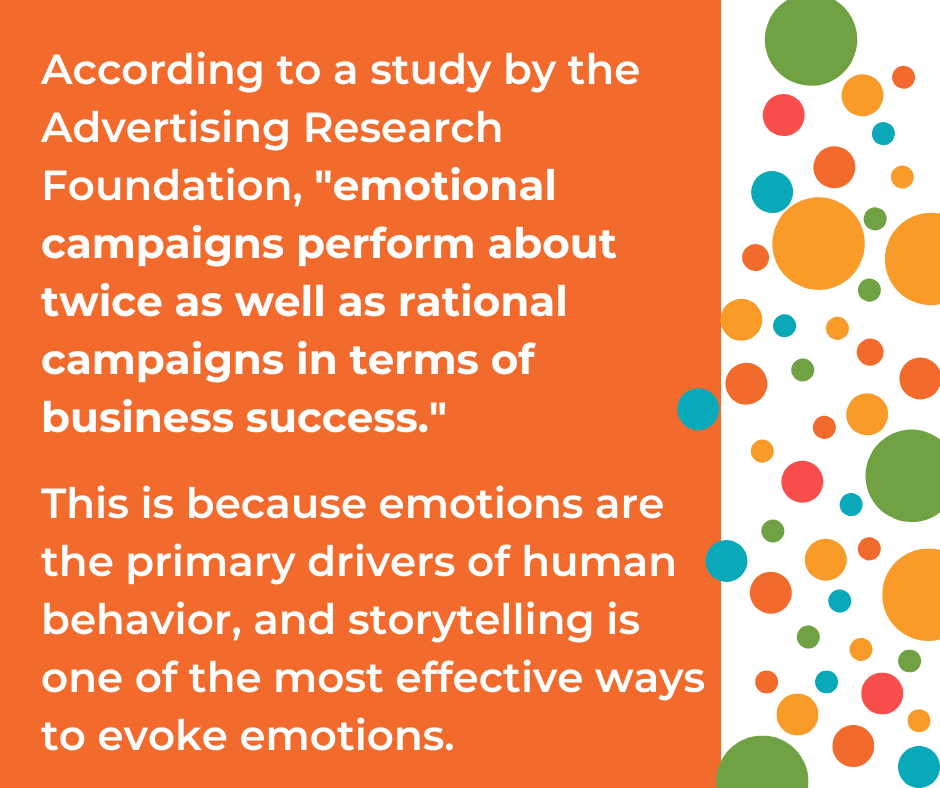
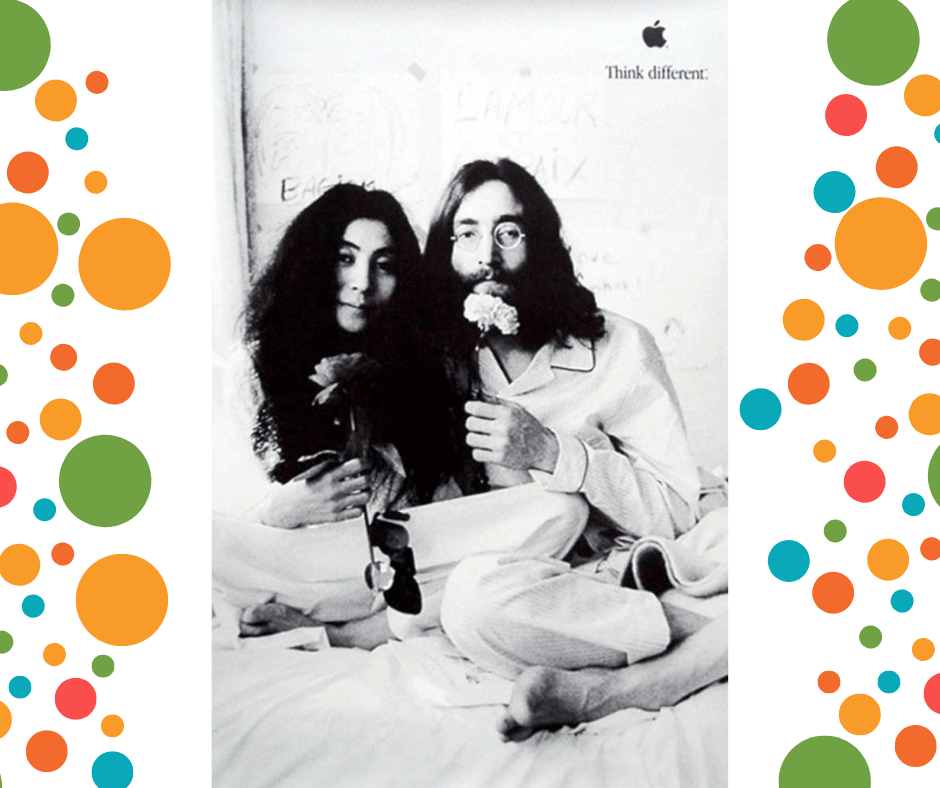
Successful companies understand the value of storytelling. Apple’s “Think Different” campaign tells the story of how it differs from other technology companies, highlighting its innovation and creativity. This story inspires customers to see themselves as part of a community of people who are also “different.”

Dove’s “Real Beauty” campaign tells the story of how women should embrace their natural beauty. The campaign uses real women with diverse body types and skin tones and focuses on their stories and struggles. This story resonated with customers and helped Dove become a leader in the beauty industry.
Storytelling is a powerful tool in product marketing because it evoles emotions, connects with customers on a deeper level.
To quote Maya Angelou, “I’ve learned that people will forget what you said, people will forget what you did, but people will never forget how you made them feel.” This is the essence of storytelling in product marketing: create an emotional connection with customers that lasts beyond the transaction.
Understanding Your Audience
To create a compelling brand story, it’s crucial to understand your target audience and their needs and interests. This knowledge allows you to tailor your storytelling to resonate with them and create a strong emotional connection.

Customers are looking for brands that align with their values and beliefs. They are more likely to engage with content that speaks to those values. A great example of this is TOMS Shoes, a company that donates a pair of shoes to someone in need for every pair purchased. TOMS promotes its ethos and tells a story of social responsibility and giving back. This story resonates with customers who value social impact and has helped TOMS become a leader in the ethical fashion industry.

Another example is Airbnb, a company that tells the story of “belonging anywhere.” The brand’s storytelling focuses on the unique and authentic experiences that customers can have when they use Airbnb, catering to the needs and interests of travellers who seek immersive and personalised travel experiences.
To understand your target audience and their needs and interests, it’s important to gather data and insights about their demographics, psychographics, and behaviours. This information can be collected through market research, customer surveys, and social media analytics.
Once you deeply understand your target audience, you can tailor your storytelling to meet their needs and interests. This can include incorporating their values and beliefs, using language and visuals that resonate with them, and telling relatable and inspiring stories.
Get regular insights
Keep up to date with the latest insights from our research as well as all our company news in our free monthly newsletter.

Creating Your Story
Creating a compelling brand story is an art that requires careful planning and execution. A strong brand story can engage customers, create an emotional connection, and differentiate your brand from competitors.
Here are some tips and guidance on how to create a compelling brand story:
Develop a relatable character
Your story’s protagonist should be someone your target audience can relate to. This character should have struggles and challenges that they can identify with.
For example, the clothing brand Patagonia tells the story of Yvon Chouinard, the company’s founder, as a relatable character who embodies the brand’s values of sustainability and environmentalism.
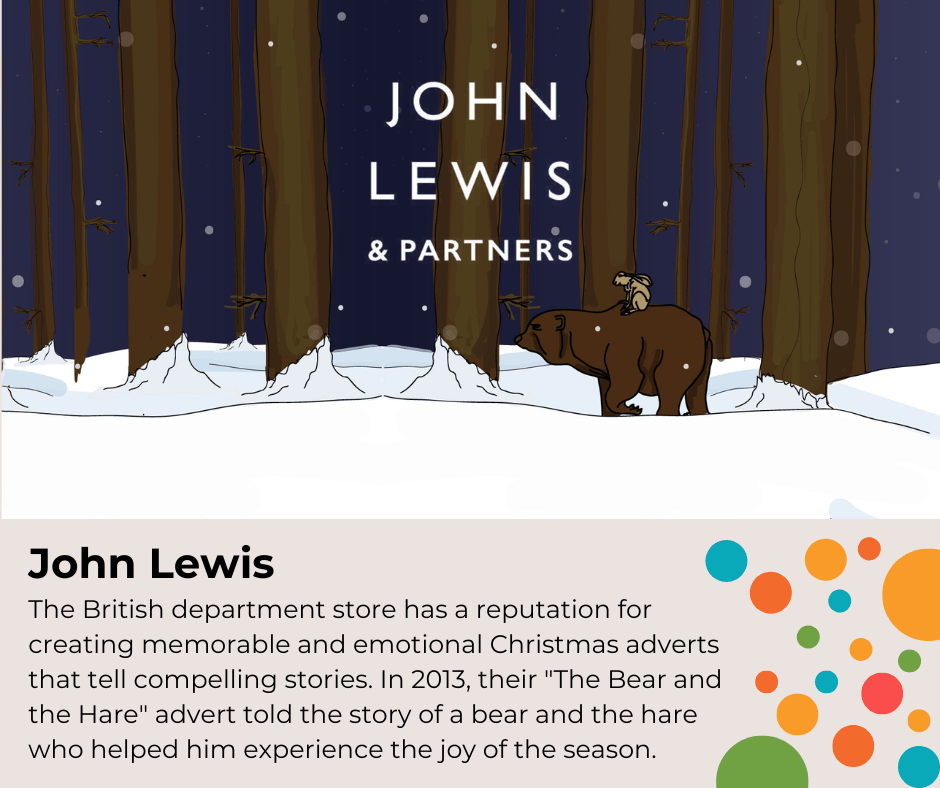
Create conflict
A compelling story needs conflict to create tension and keep the audience engaged. This conflict could be anything from a problem your target audience faces to a challenge your company overcame.
The shoe company Allbirds tells the story of how they discovered a sustainable material to make their shoes, overcoming the challenge of finding an environmentally-friendly option in the fashion industry.
Provide a resolution
A resolution is the story’s conclusion, where the conflict is resolved. This resolution should satisfy the audience and reinforce your brand’s values.
The car company Volvo tells the story of how their cars prioritise safety, resolving the conflict of fear and danger on the road.
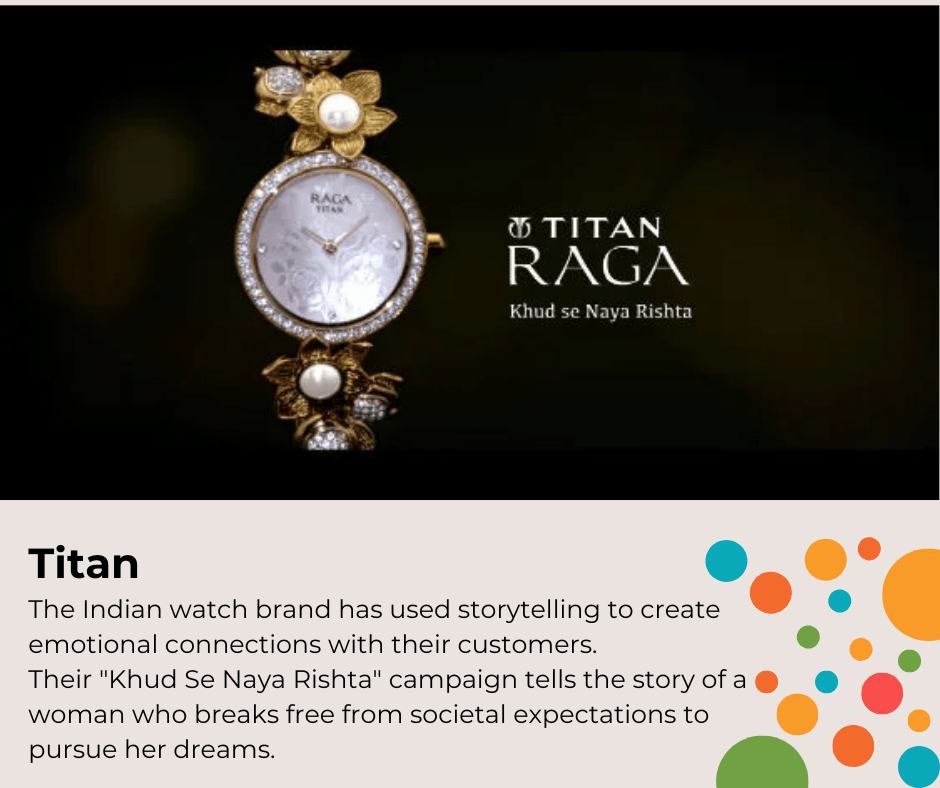
Use visuals and language
Your language and visuals should be consistent with your brand’s values and personality. This includes everything from the tone of your language to the colours and imagery you use.
The makeup brand Glossier uses playful and colourful imagery in its storytelling to reflect the brand’s personality and appeal to a younger demographic.

Choosing Your Channels
Once you’ve developed a compelling brand story, it’s time to share it with the world. Choosing the right channels for sharing your story can help you reach your target audience and create a lasting impact.
Here are some of the channels you can use to share your brand story:
Social media
Social media platforms such as Facebook, Instagram, TikTok and Twitter are great for sharing visual and engaging content. According to Hootsuite, social media users spend an average of 2 hours and 24 minutes per day on social media. This presents a huge opportunity for brands to connect with their target audience and share their brand story.
The sportswear brand Lululemon uses Instagram to showcase their products and tell the story of their brand’s values and lifestyle. They also use influencer partnerships and user-generated content to create a community around their brand.
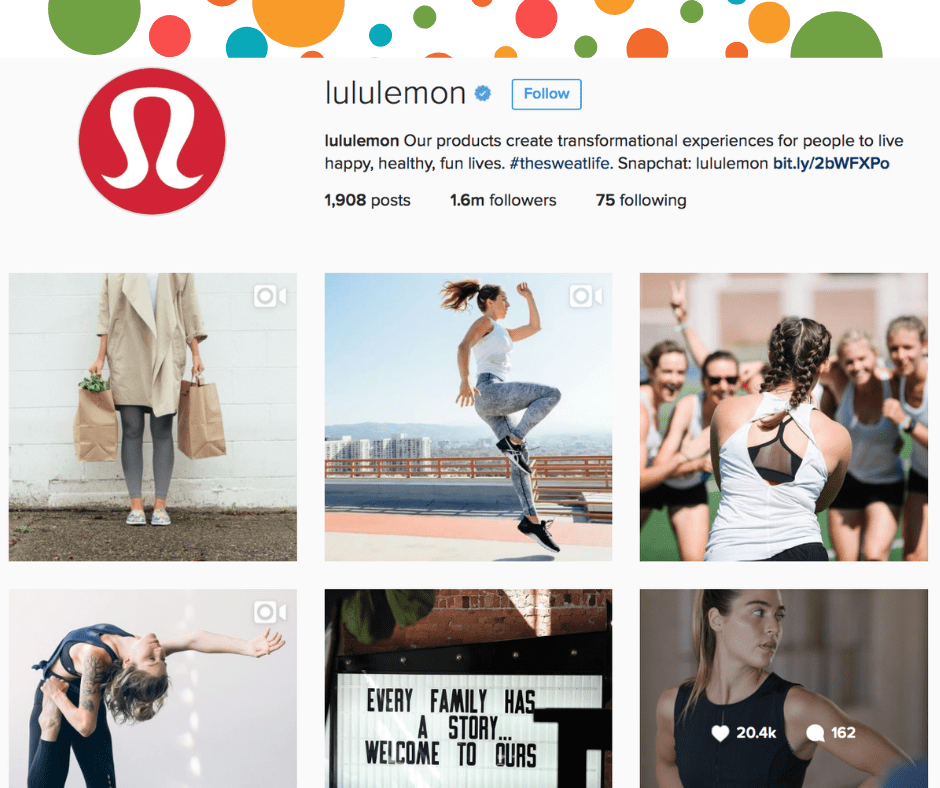
Email marketing
Email marketing is an effective way to reach customers directly and share your brand story.
According to Hubspot, email marketing has an average ROI of 38:1, making it a highly effective marketing channel.
The cosmetics company Sephora uses email marketing to share its brand story and promote its products. They send personalised emails based on customers’ purchase history and preferences, using language and visuals that resonate with their target audience.
Content marketing
Content marketing involves creating valuable, educational content that provides value to your target audience. This content can be shared on your website, blog, or social media platforms.
The furniture retailer West Elm uses content marketing to educate customers on interior design trends and share their brand story. They create blog posts and social media content that features their products in real-life settings and offers design tips and inspiration.
Measuring Success
Measuring the success of your storytelling efforts is essential to understand the impact of your brand story on your target audience.
By tracking metrics such as engagement, conversions, and sales, you can evaluate the effectiveness of your storytelling and optimise your strategy accordingly.
Here are some metrics you can use to measure the success of your storytelling efforts:
Engagement
Engagement metrics include likes, comments, shares, and followers on social media platforms. These metrics can help you understand how well your target audience connects with your brand story.
Conversions
Conversions refer to your target audience’s actions after engaging with your brand story. This can include signing up for a newsletter, downloading a resource, or making a purchase.
Sales
Sales metrics include revenue, order value, and customer retention. By tracking these metrics, you can understand the direct impact of your brand story on your bottom line.
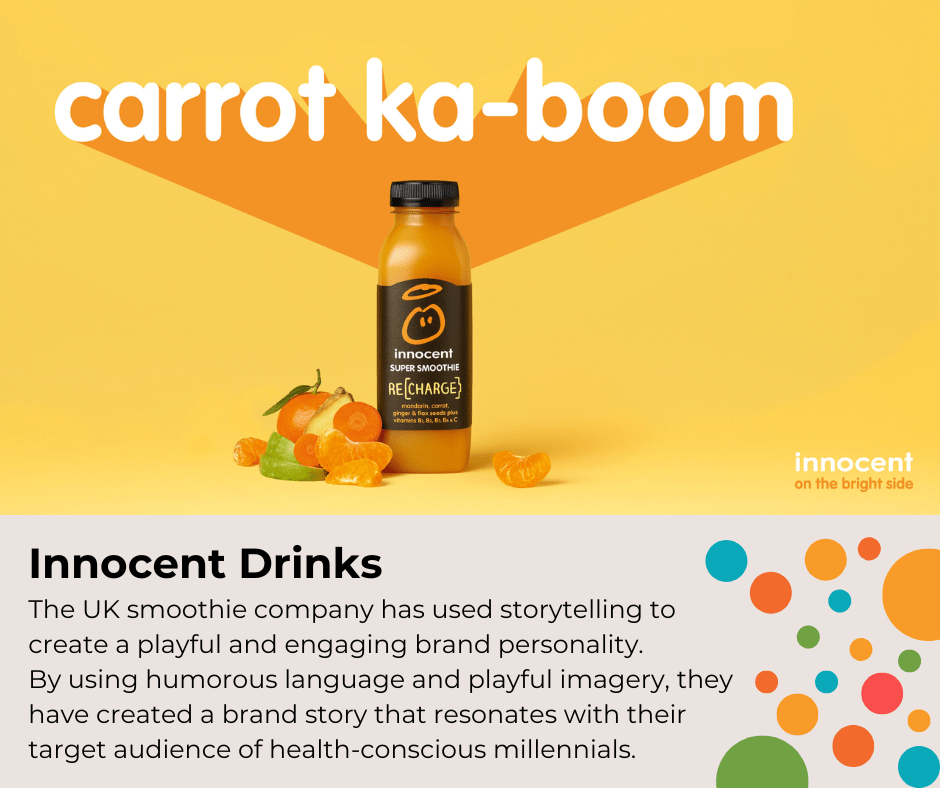
The role of Market Research and Storytelling
Market research is crucial in creating a compelling brand story that resonates with your target audience. By understanding your target audience’s needs, preferences, and pain points, you can create a brand story that is relatable and engaging.
Here are some ways that market research can help product marketers create a compelling story for their product:
Identify customer pain points
Market research can help you identify your target audience’s problems and pain points. By understanding their challenges, you can create a brand story that addresses these issues and provides solutions.
Determine brand values
Market research can help you identify the values and beliefs that your target audience cares about. By incorporating these values into your brand story, you can create an emotional connection with your audience.
Test messaging
Market research can help you test different messaging and brand story concepts with your target audience. By getting feedback from your audience, you can optimise your brand story and ensure that it resonates with your customers.
Storytelling is a powerful tool that product marketers can use to create a lasting emotional connection with their customers. By tapping into their hopes, fears, and desires, companies can tell compelling brand stories that engage customers and drive sales.
As competition in the marketplace continues to grow, the brands that can tell a compelling brand story will be the ones that stand out and succeed.


 Senior Marketing Executive
Senior Marketing Executive Sales & Marketing
Sales & Marketing General Manager PR -Internal Communications & Government Affairs
General Manager PR -Internal Communications & Government Affairs Vital Strategies
Vital Strategies
 Customer Intelligence Director
Customer Intelligence Director